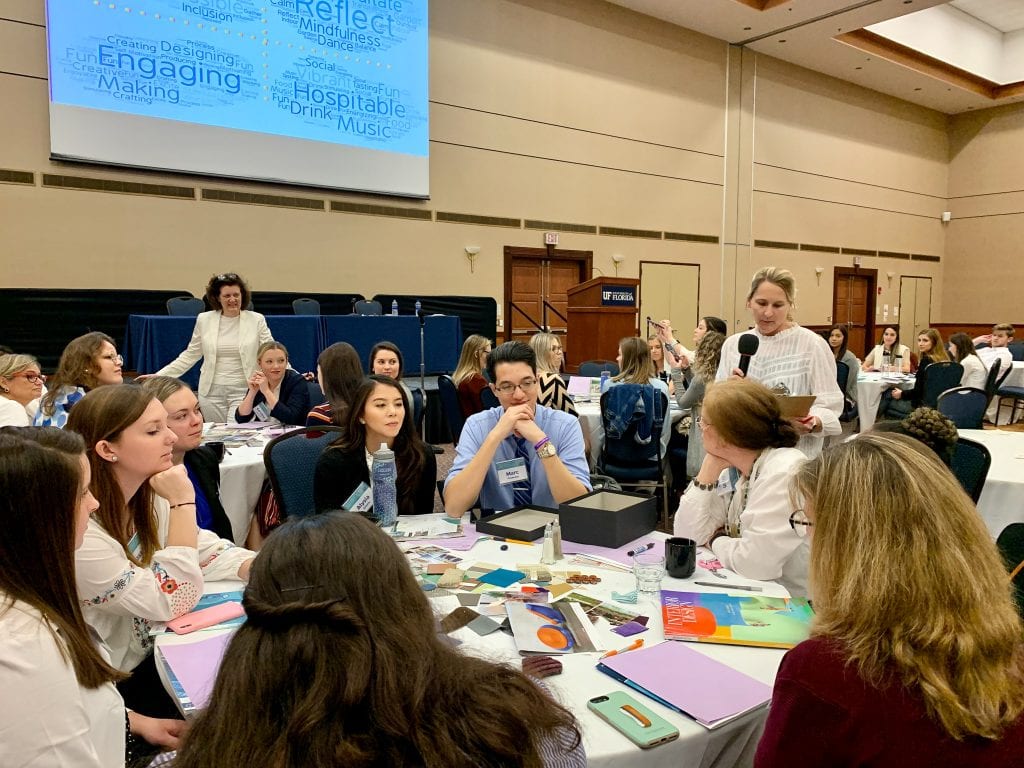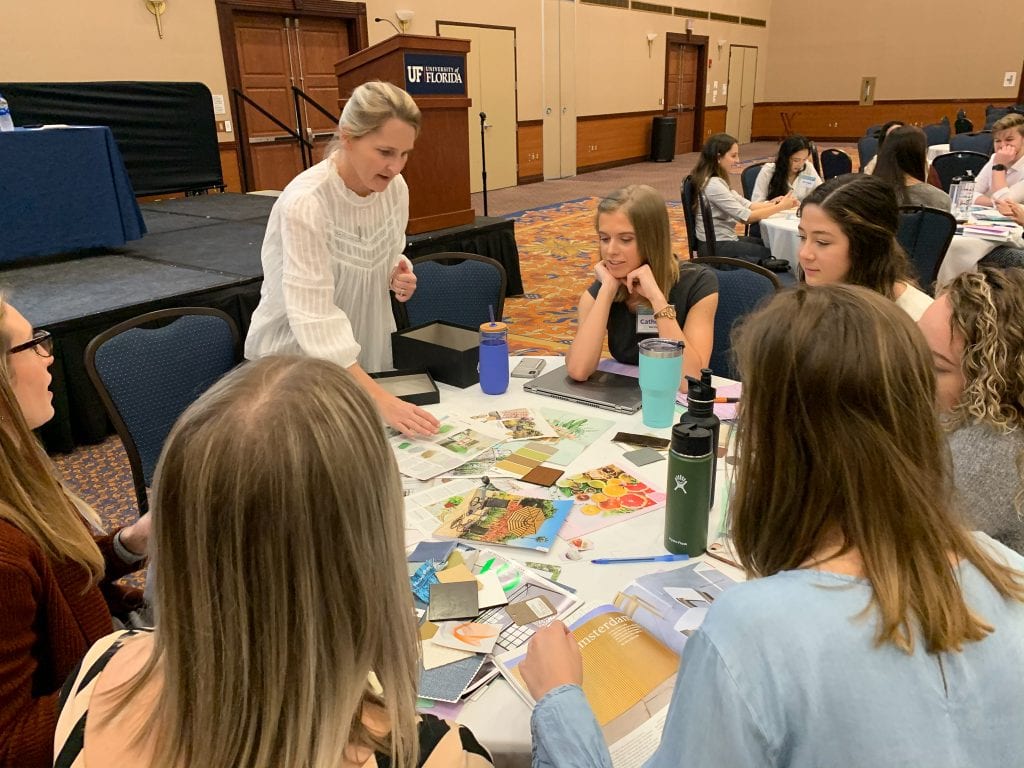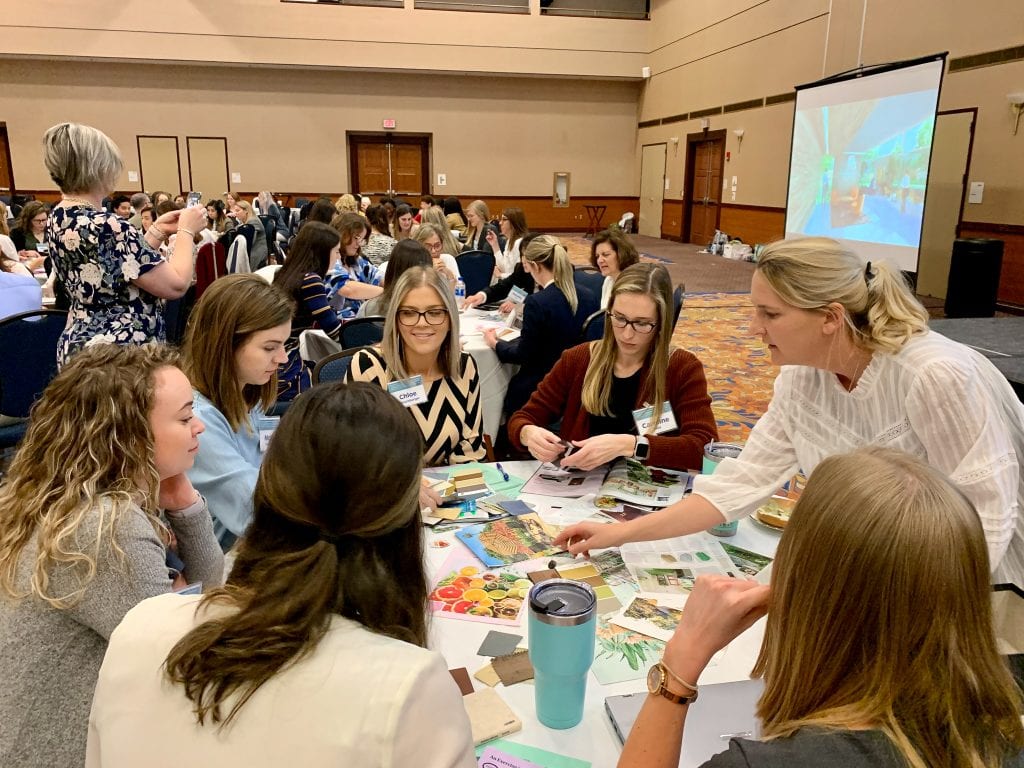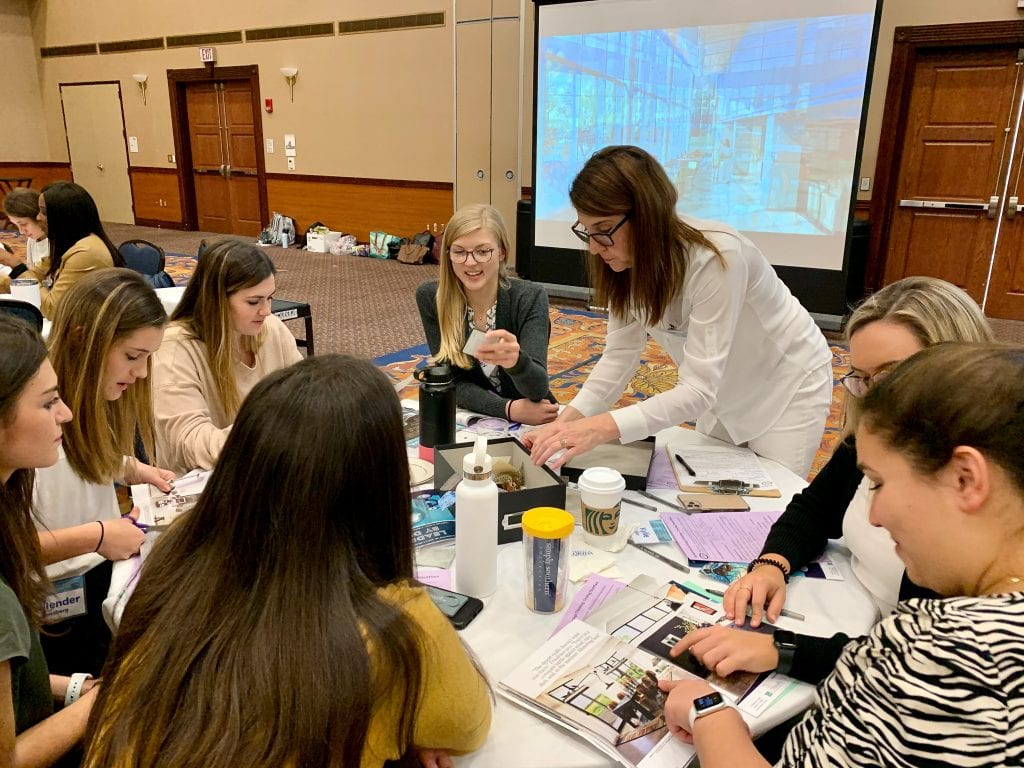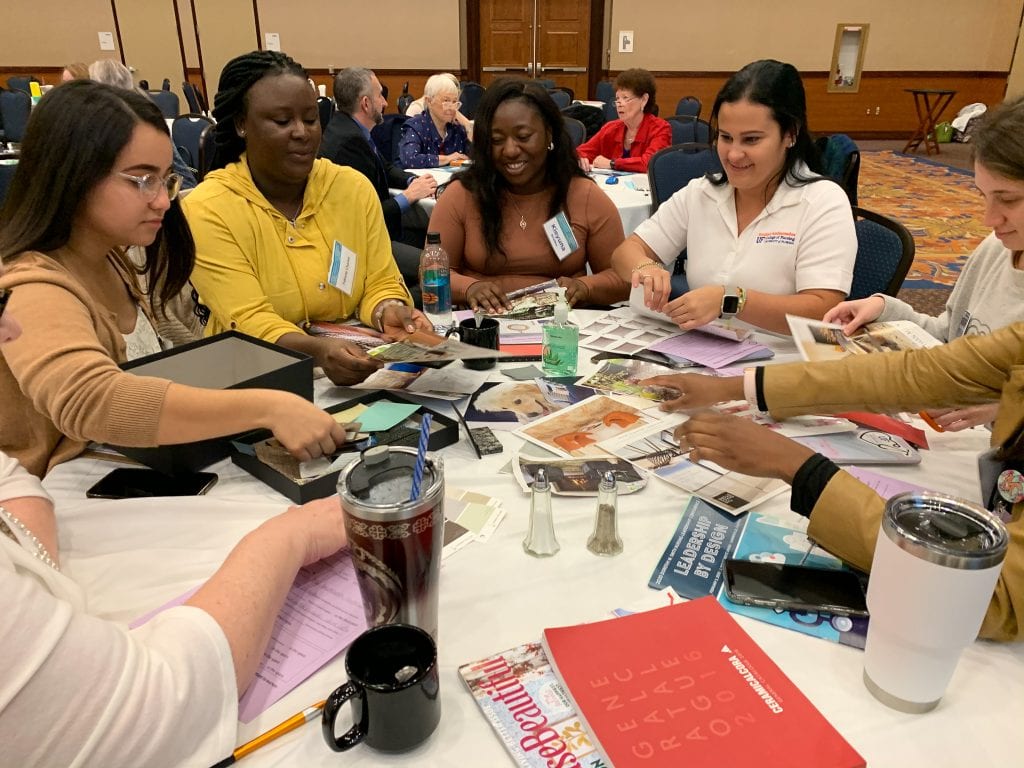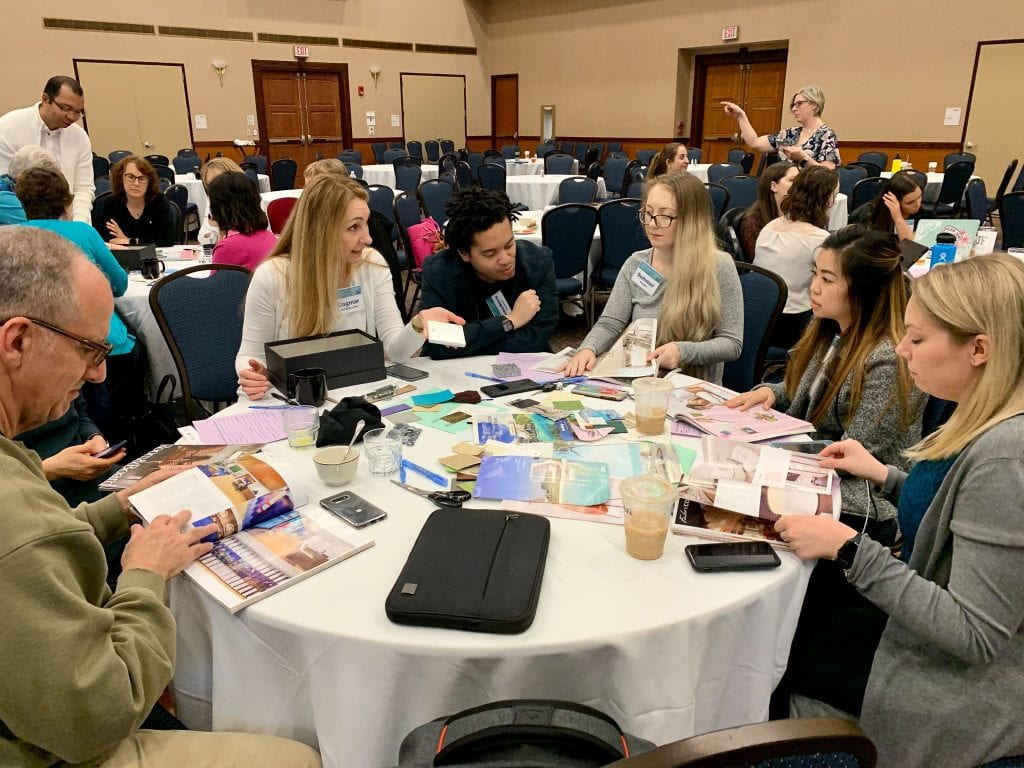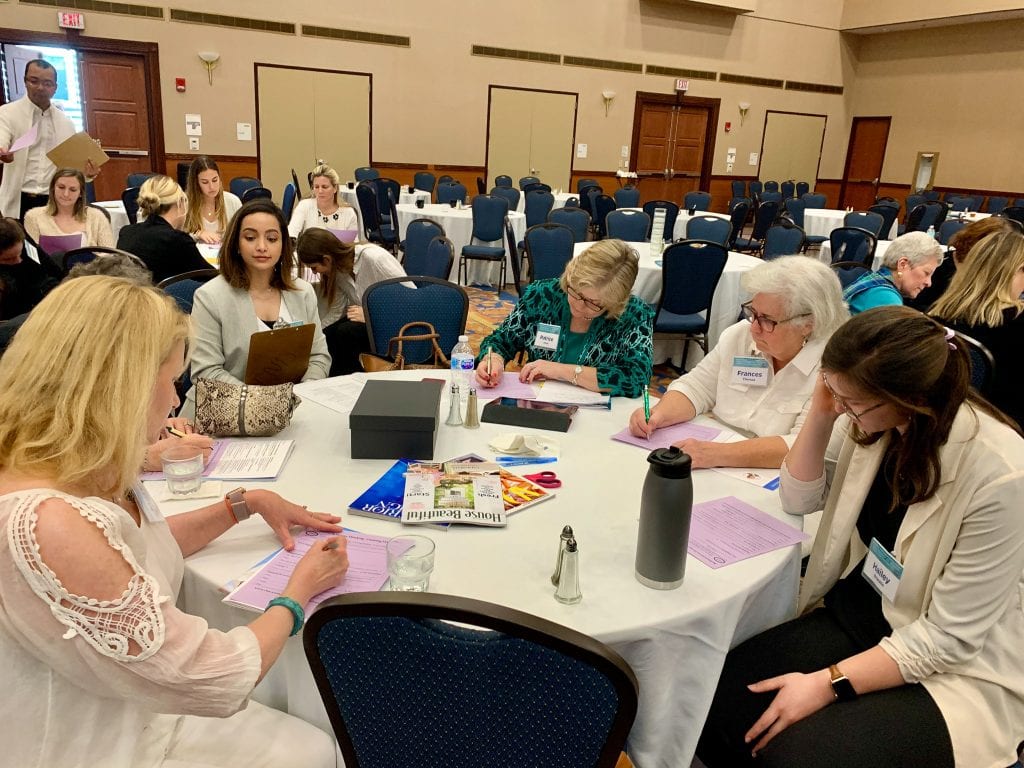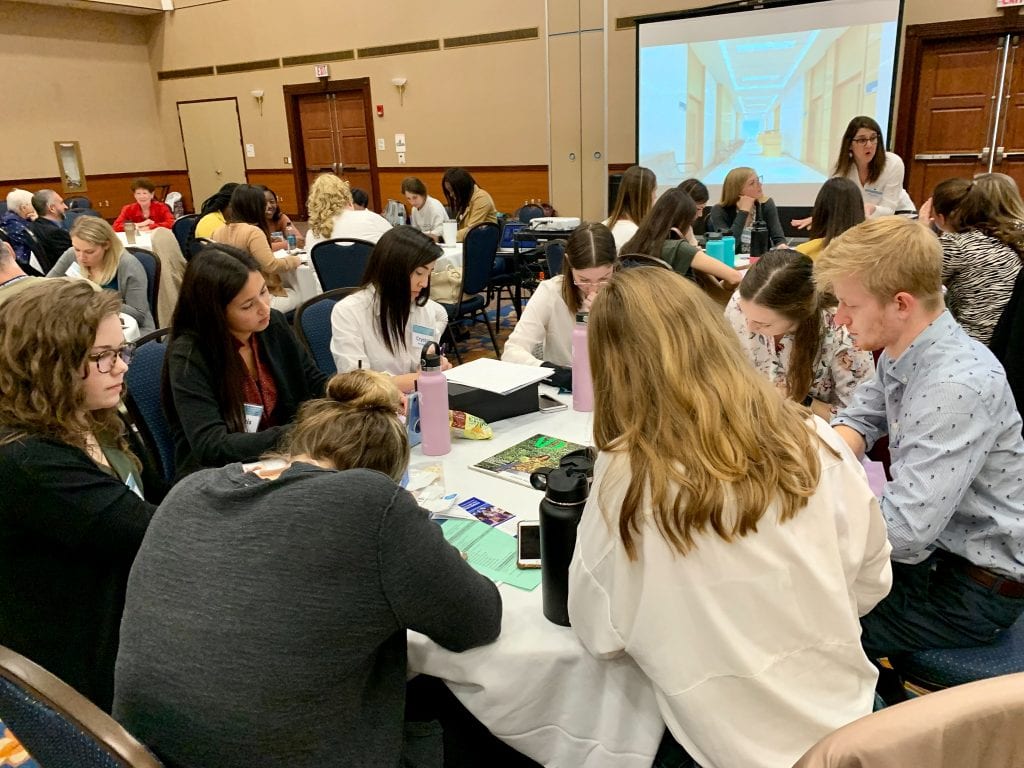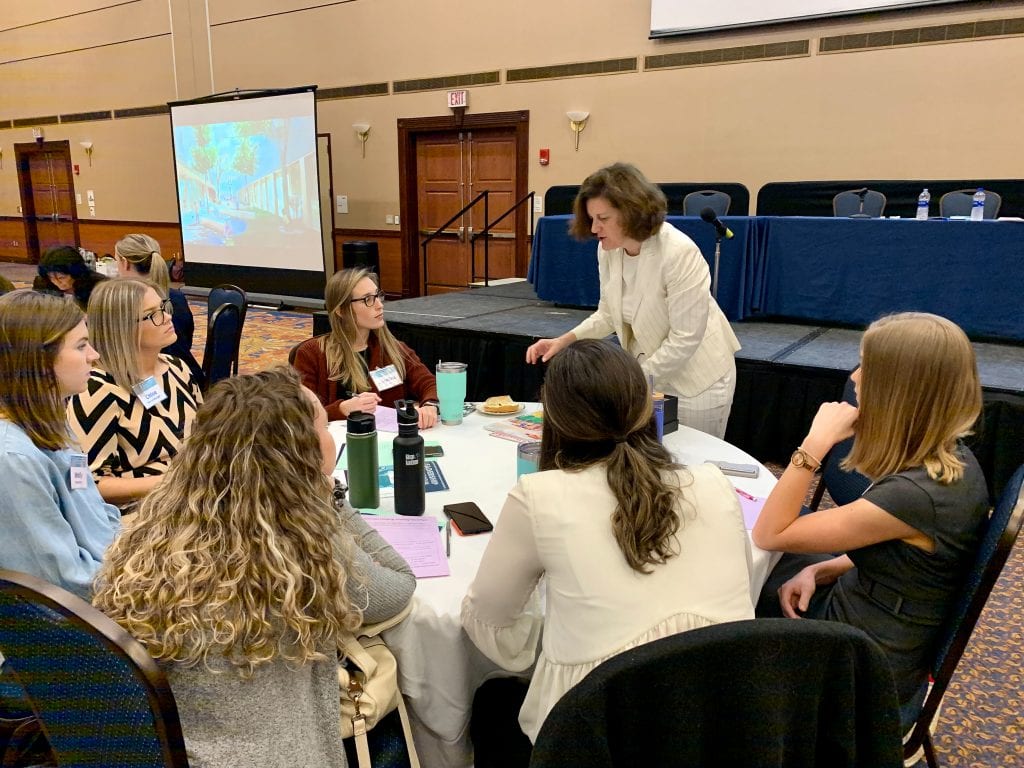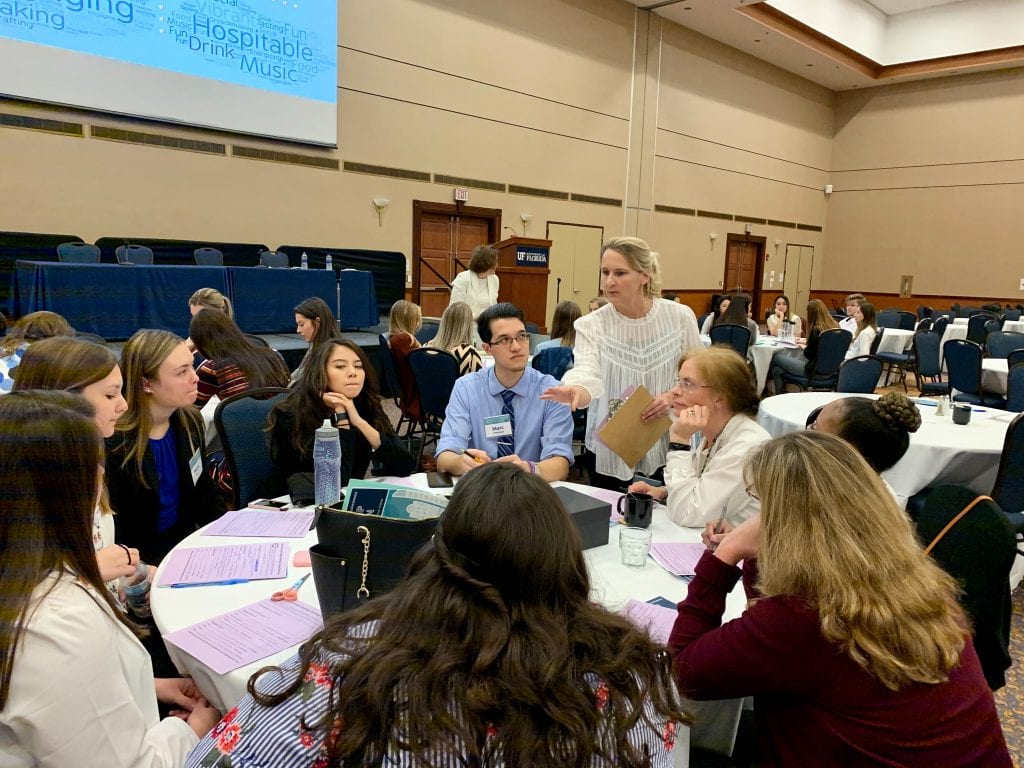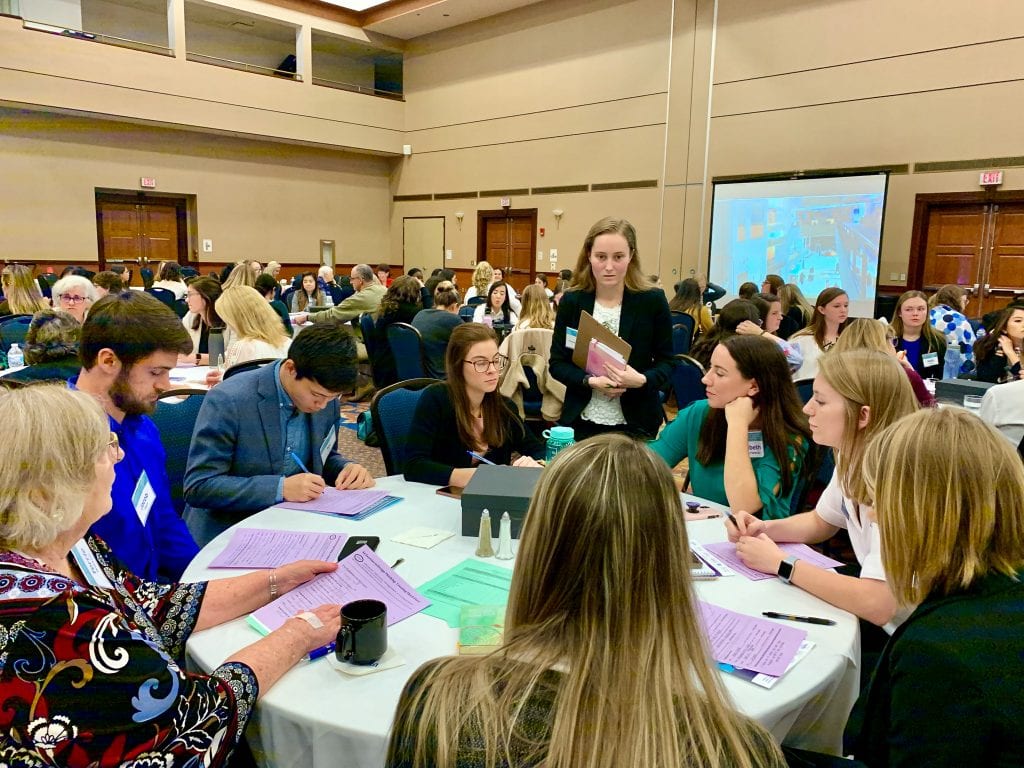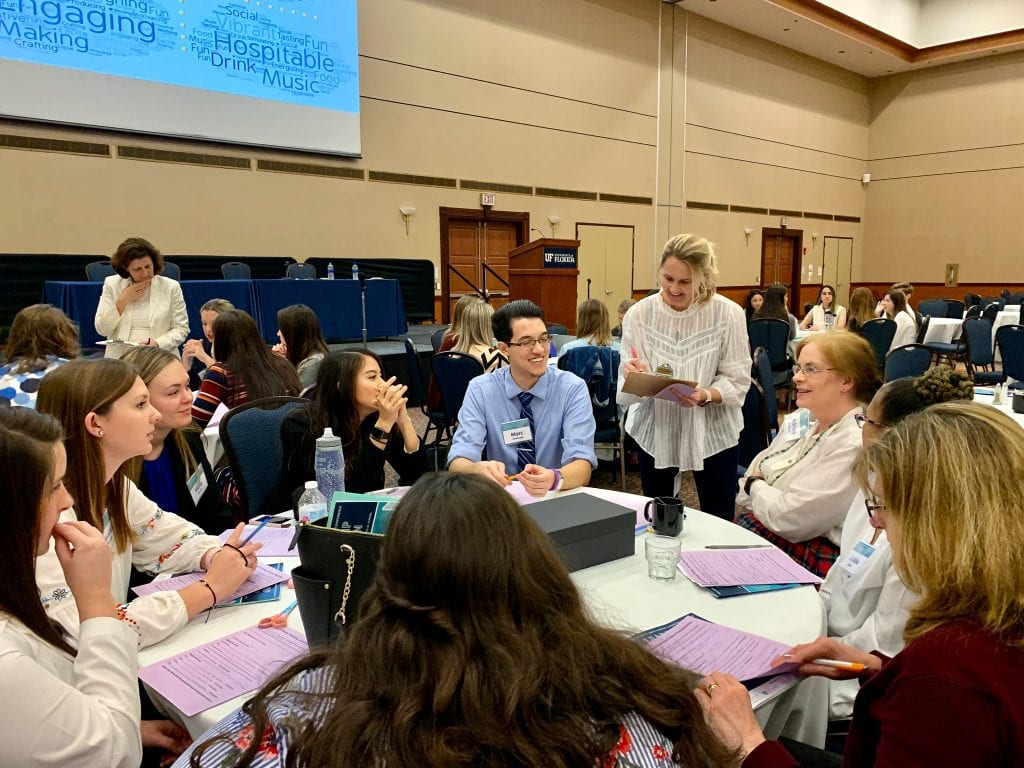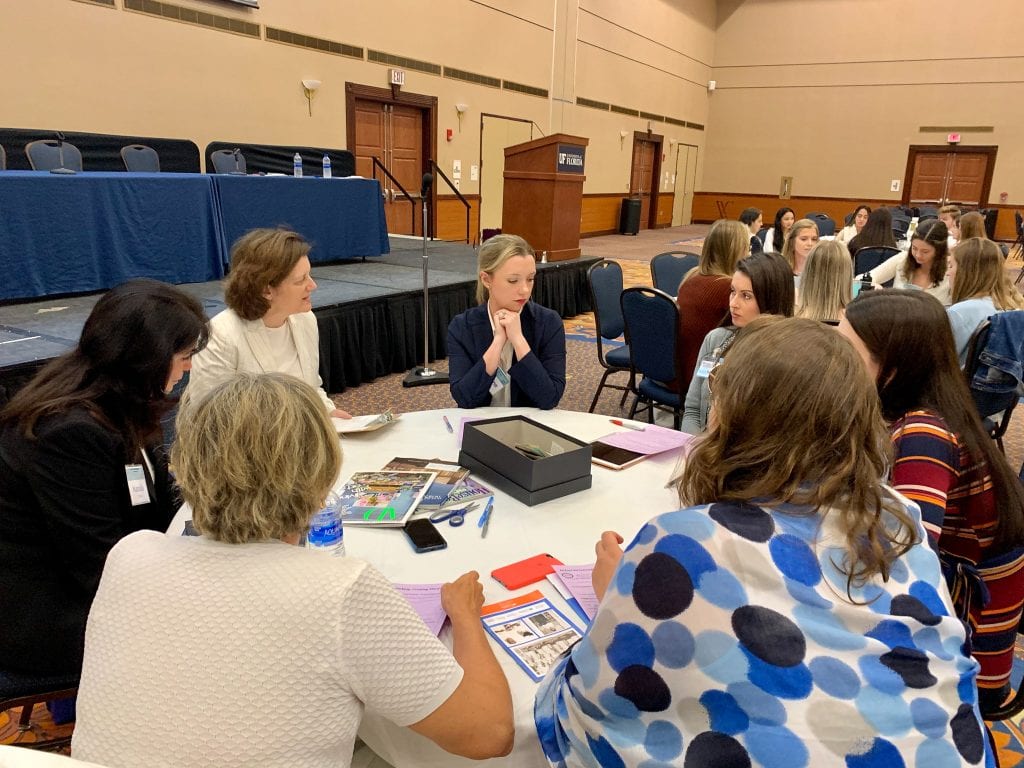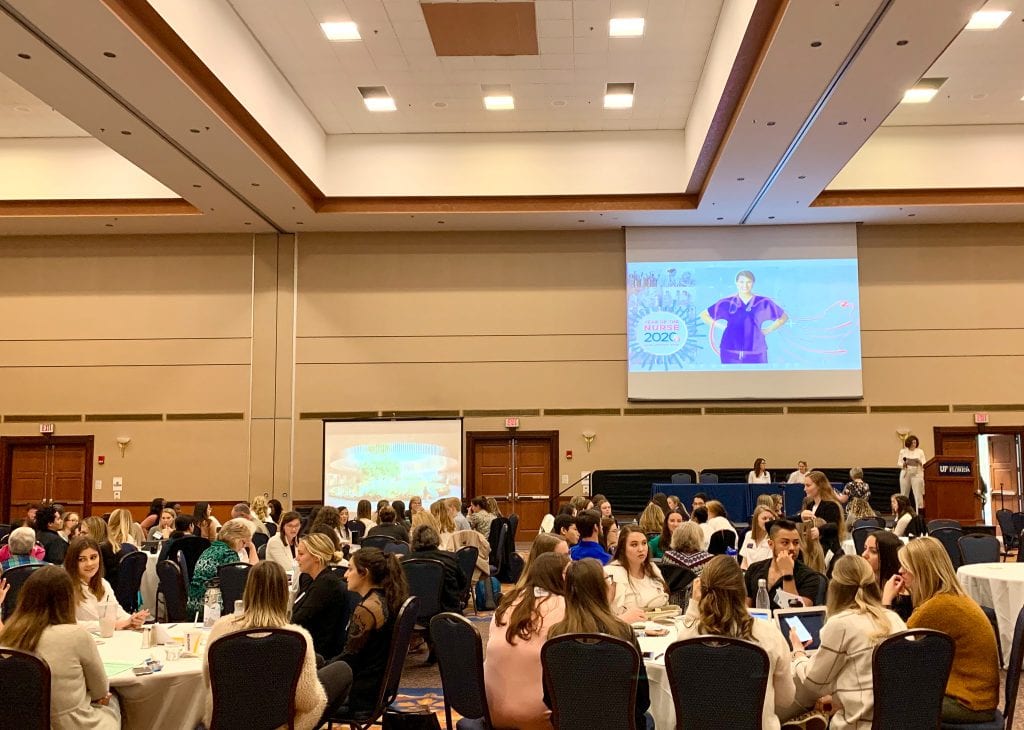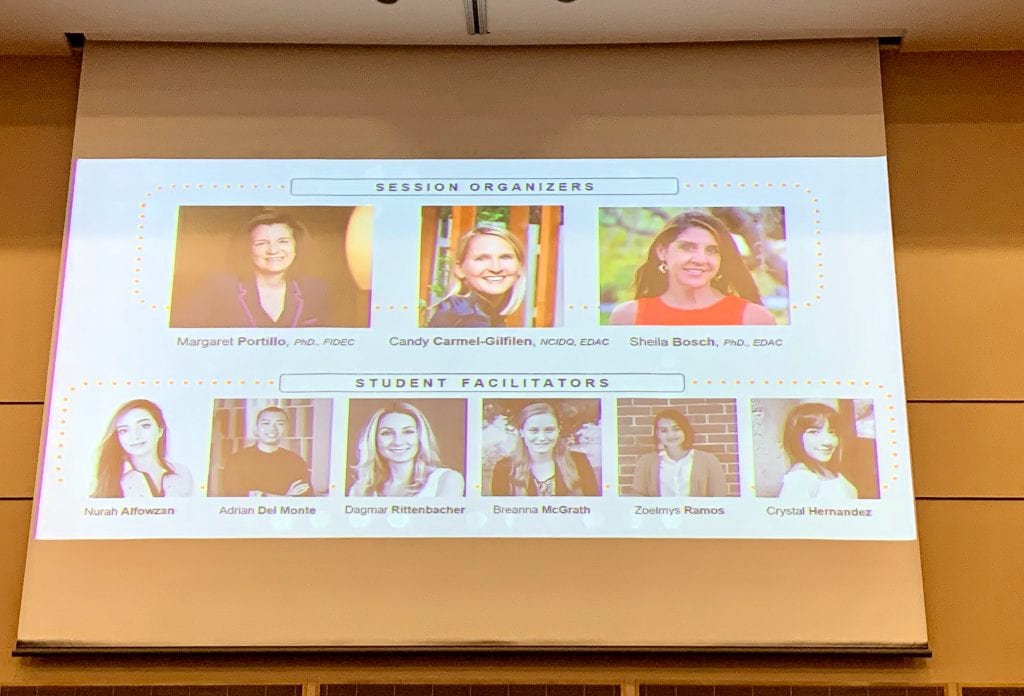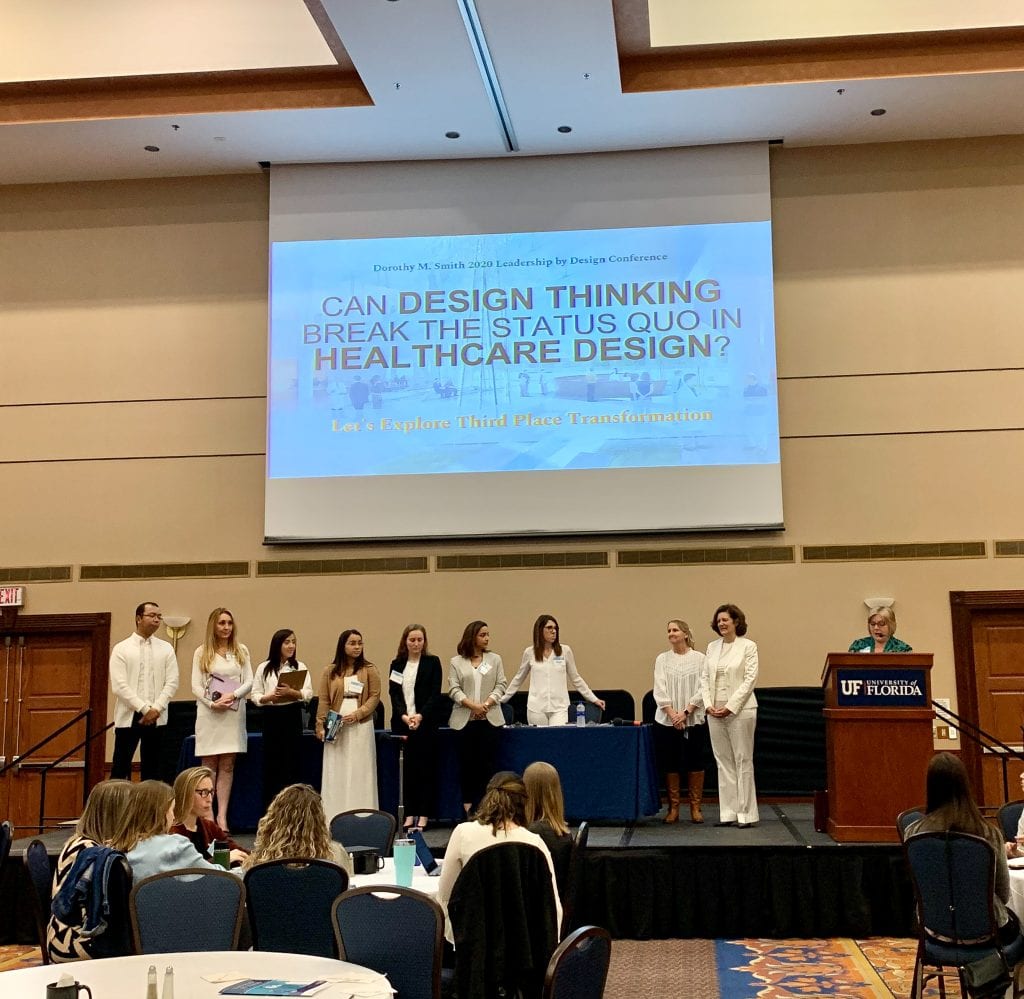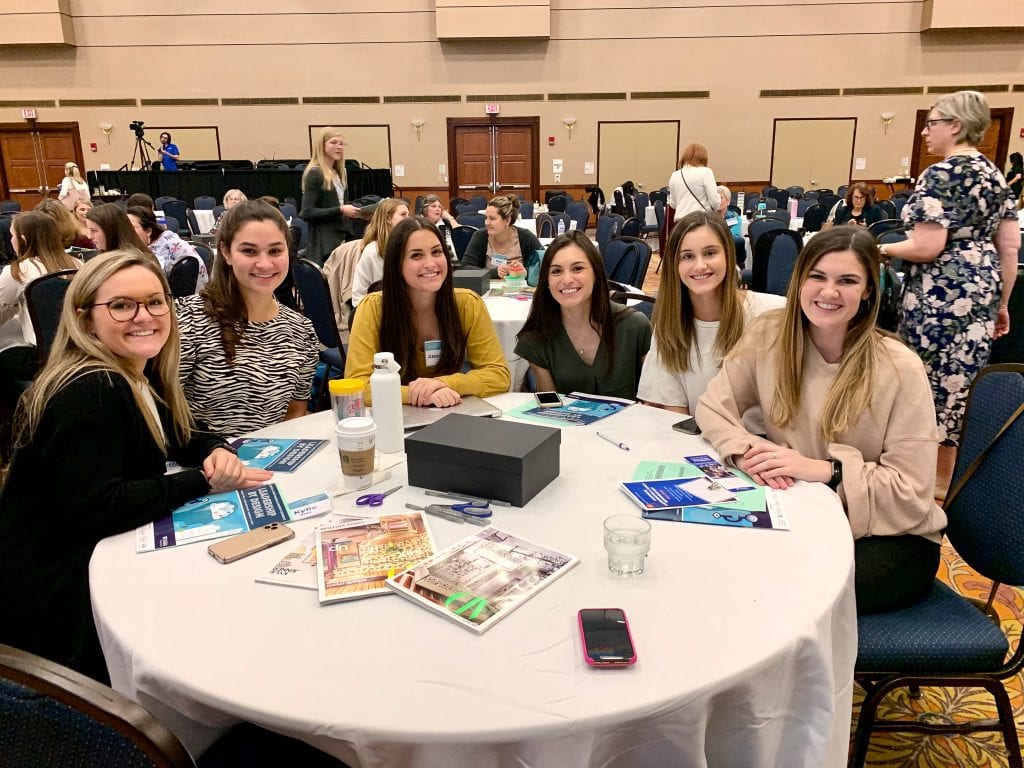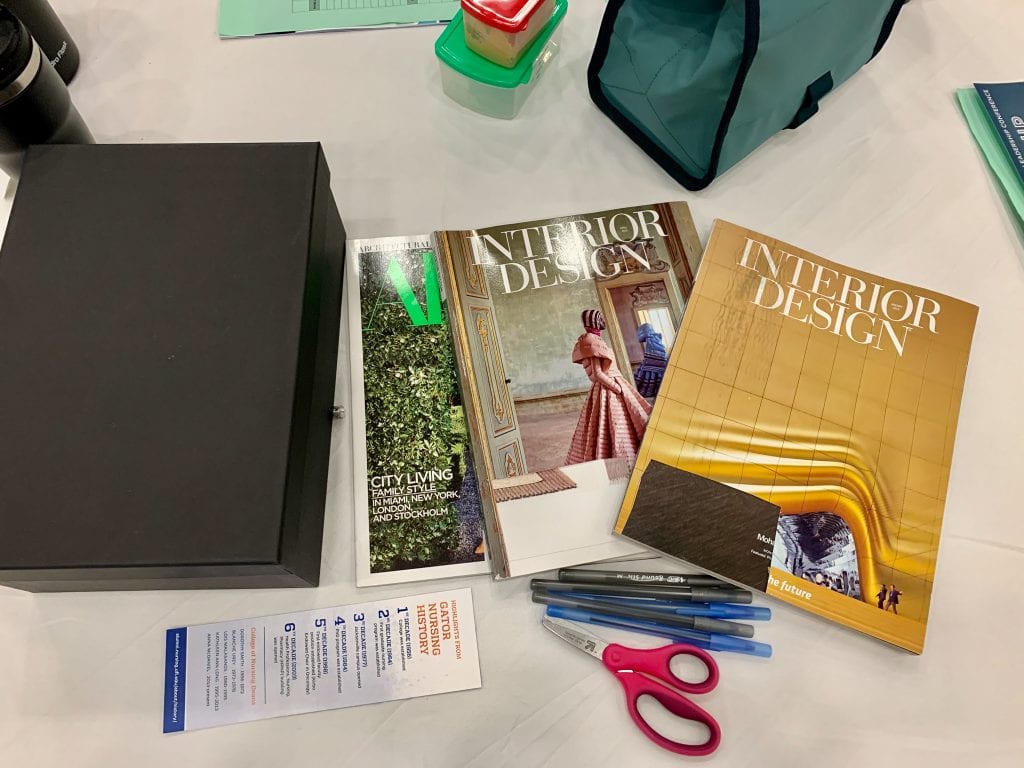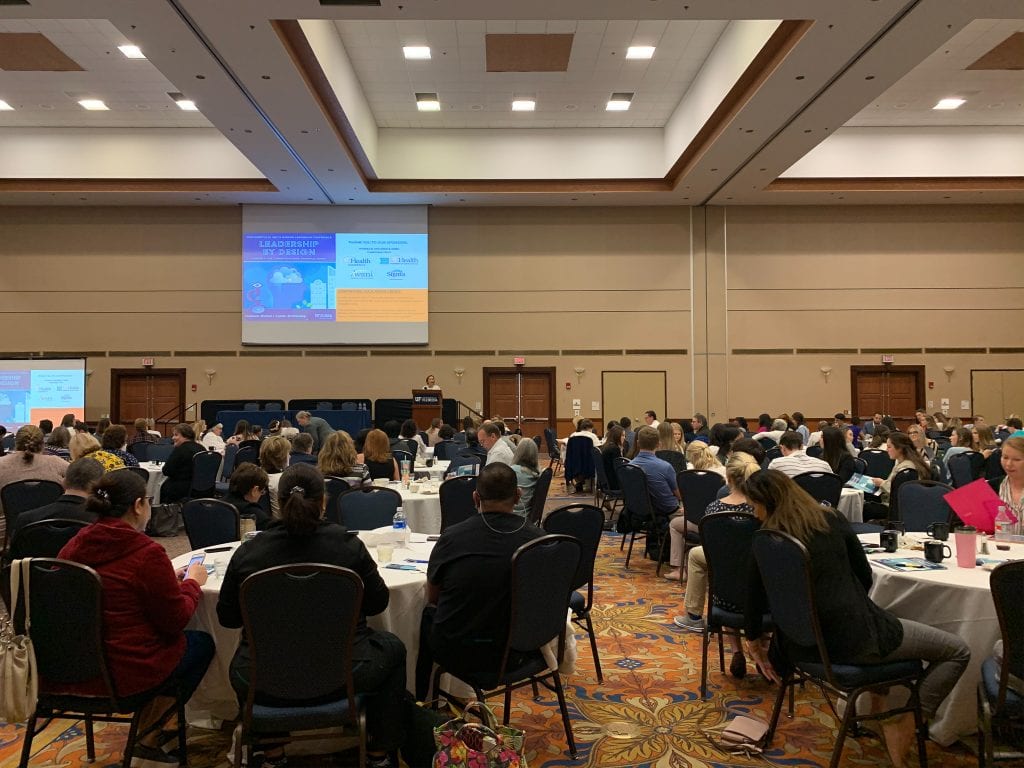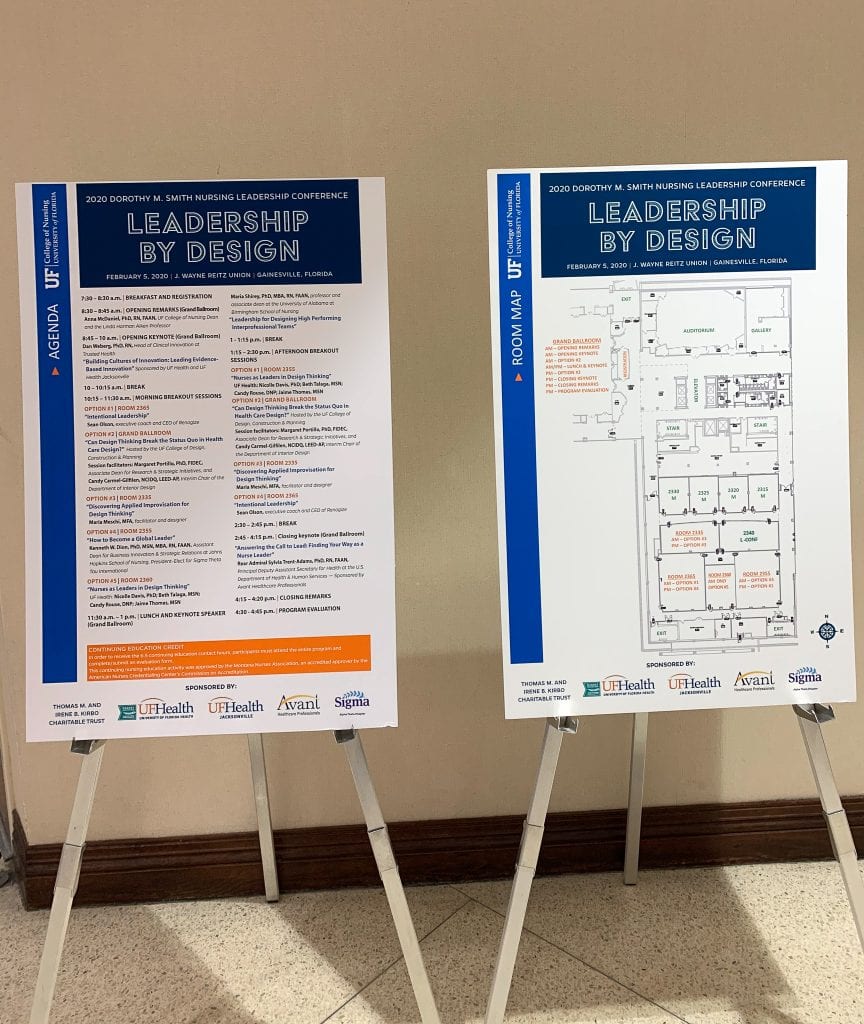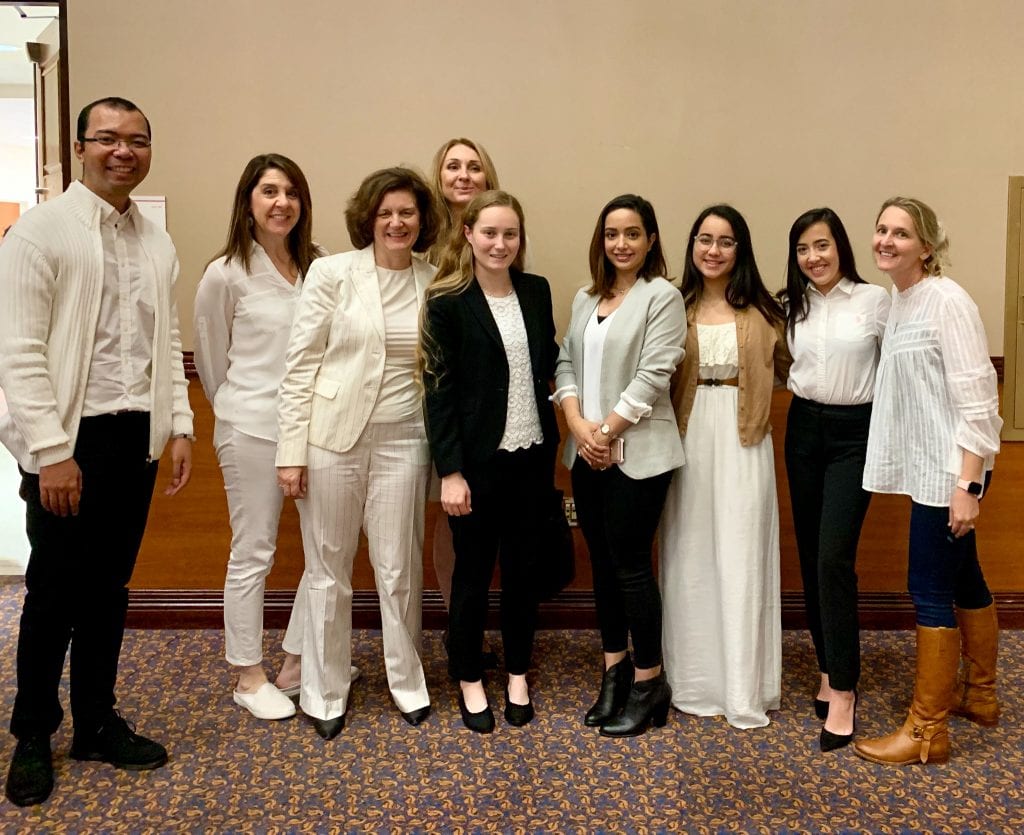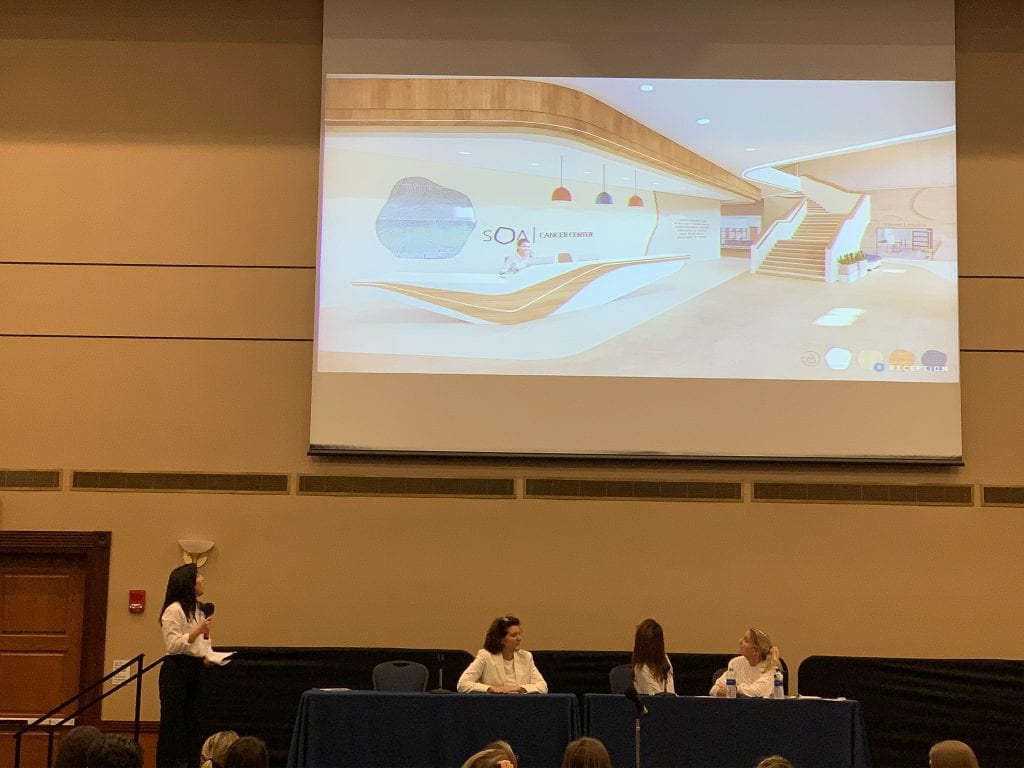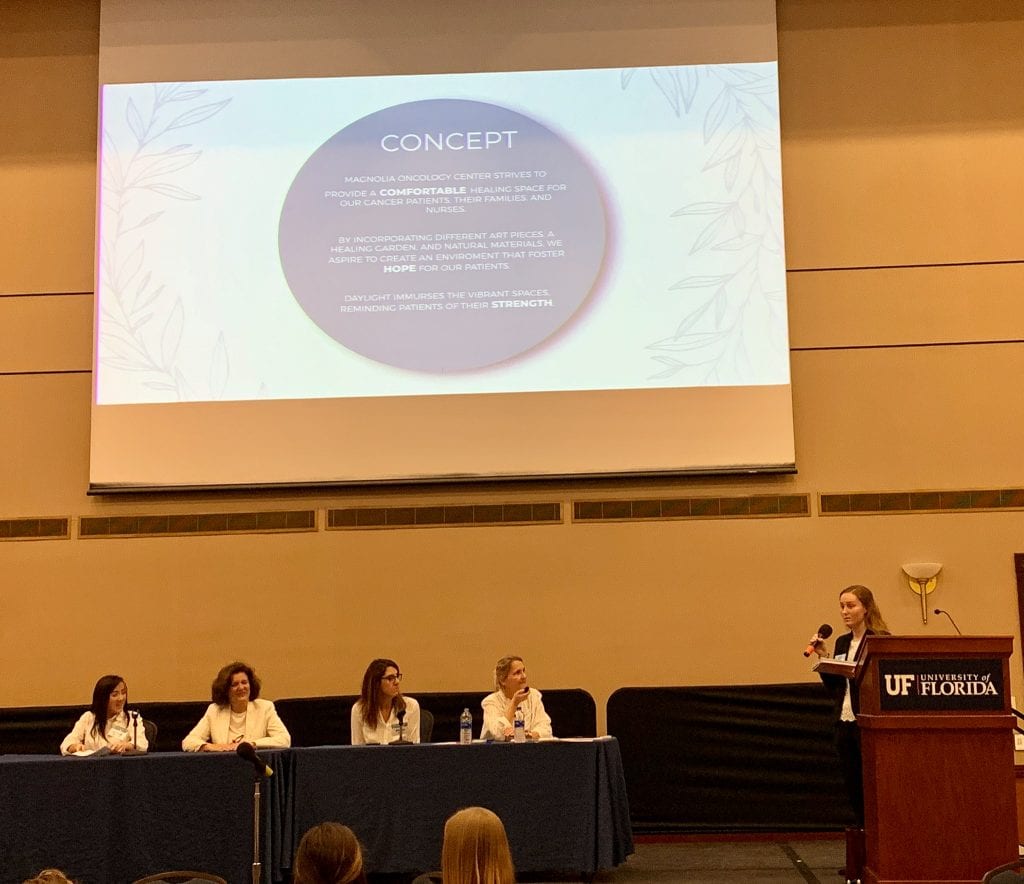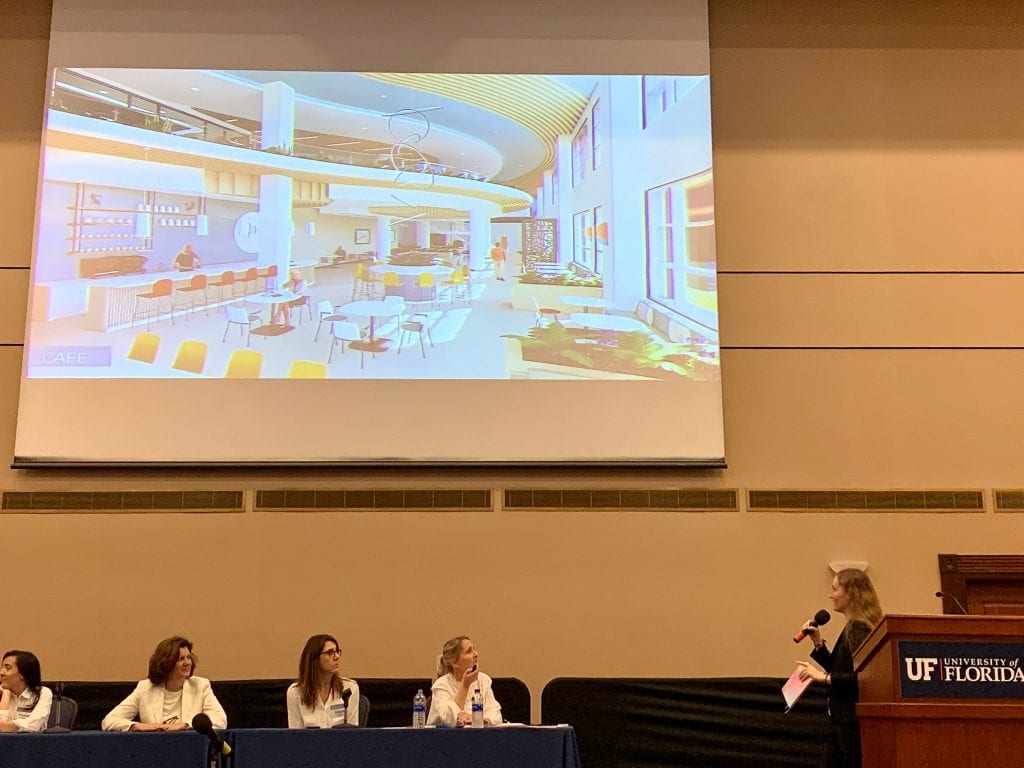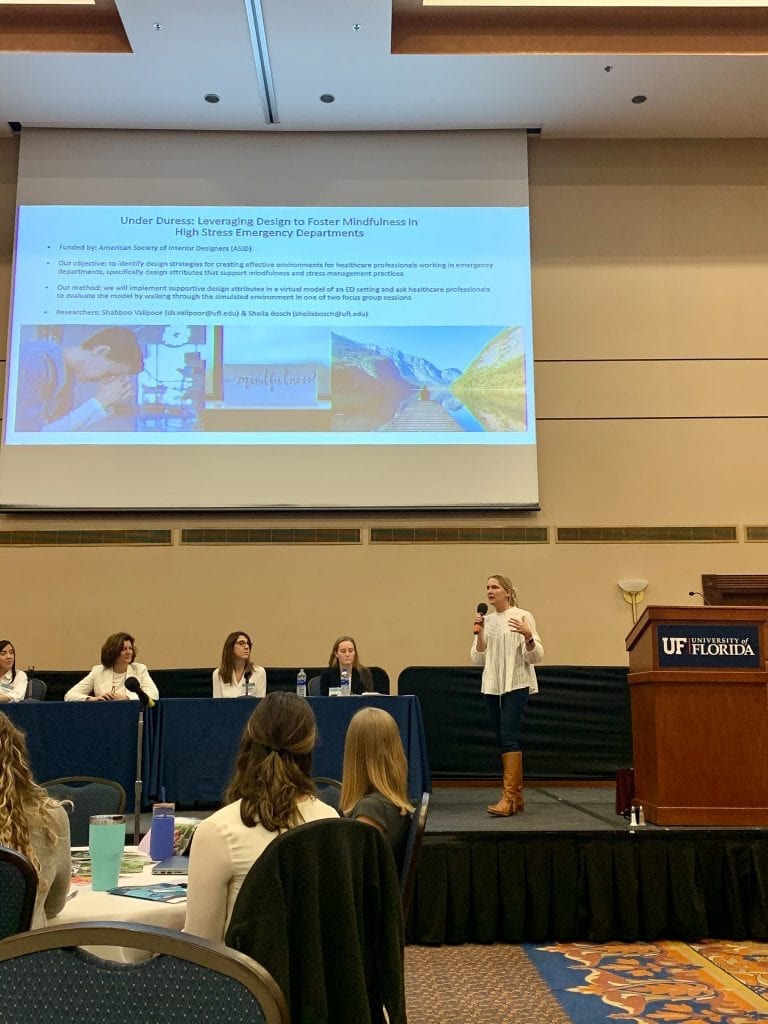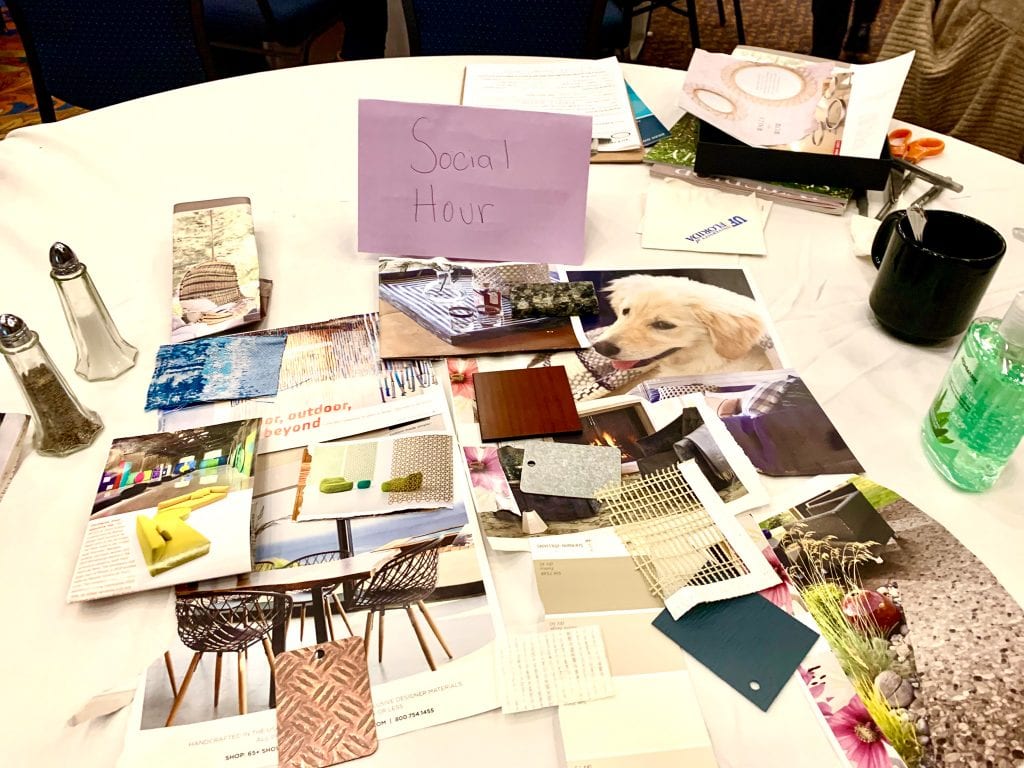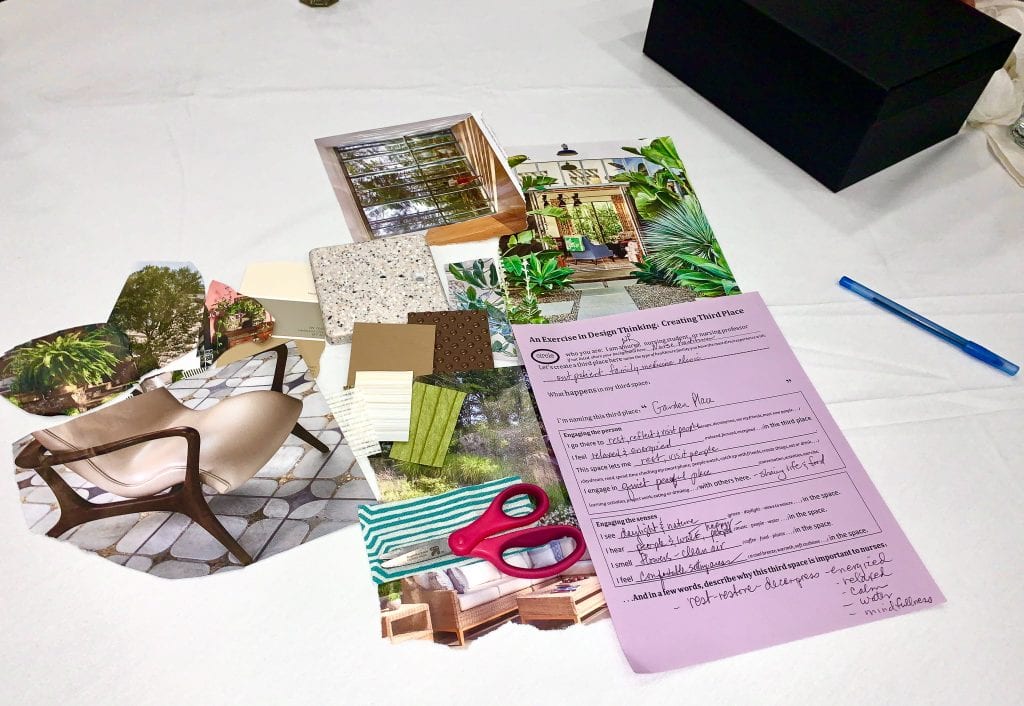By Rosa Medina
Over five hundred UF nursing students and faculty, nurses, health professionals and others interested in learning more about healthcare came together to attend the 2020 Dorothy M. Smith Conference on Nursing Leadership on Wednesday, Feb. 5 in the Reitz Union.
Since 2004, the Nursing Leadership Conference has taken place every other year, offering the opportunity to learn more about the most pressing topics affecting the profession of nursing. This year’s conference offered a bevy of presentations and workshops, including a session, “Can Design Thinking Break the Status Quo in the Health Care Department,” hosted by the UF College of Design, Construction and Planning’s Engage Design Lab from the Department of Interior Design. The 90-minute design thinking workshop was repeated in the morning and afternoon of the conference, drawing overflow attendance in both sessions.
The workshop organizers, Margaret Portillo and Candy Carmel-Gilfilen, with a team of nine interior design faculty and students, shared ideas and facilitated group breakouts. The session focused on the potential of third place environments in healthcare. Ray Oldenburg coined the term “third place,” which differs from “first place,” representing home or “second place,” defining work spaces. In contrast, “third place” offers a location where we return to again and again (for example, becoming a coffeehouse regular) to feel part of a community. Building on this notion, the intent of the workshop was to explore how a third place might elevate the healthcare experience for nurses and their patients.
Some activities included reverse brainstorming. This exercise challenged nursing students and professionals to imagine the worst physical facility they would absolutely never want to treat patients in or work in. The attendees also viewed a wide range of institutional to inspired social spaces found within and outside healthcare. They also engaged in sensory exploration exercises before working in small groups to vision healthcare third places. As the ideas began flowing, students and professionals became completely immersed in the task at hand. This experience led to new insights for Nina Knight, a bachelor of nursing (BSN) senior, who said she enjoyed this session because it opened her up to the idea that hospitals don’t just have to just be a place for treating sick people.
Capping off the session, Breanna McGrath and Crystal Hernandez, both interior design seniors, shared their own recent studio projects that incorporated third places in an oncology center. This work gave current and future health professionals insights into the design process and research-informed third place solutions that delivered on human wants and needs while satisfying building performance criteria and codes.
Chloe Hershberger, an accelerated BSN senior, said the workshop made her realize how critical it is for hospitals and health facilities to be as comfortable as possible for patients and their families. “Feeling like you’re in a hospital can be very discouraging and it’s a constant reminder that you or a loved one is sick or going through something, so it’s important to make them feel at home as much as possible,” Hershberger said. “Having a comfortable place for them to stay and offering options proves that we actually care about them, and we should always be willing to go the extra mile.”
Exposure to design thinking demonstrated how physical space and community-building can make a difference to patients, their families and can support nurses’ own wellbeing. The session invited its participants to enter the mind of the designer and rethink how collaboration can inform leadership in nursing. Abigail Fuels, a BSN senior, said her key takeaway from this session was the importance of collaboration not just within healthcare but across other professions in ways that related to leadership and transformation. “I thought the ideas presented from the design school could really change the way people feel about hospitals from the patients to the staff,” Fuels said.
The overall enthusiasm reflected new appreciation for the built environment.
“At the end of the session, it was heartening to see many nursing students and professionals express that this was a possibility for their work environment that third places offer a way to relieve stress and burnout while building community,” Margaret Portillo, DCP Associate Dean and Professor of Interior Design said.
